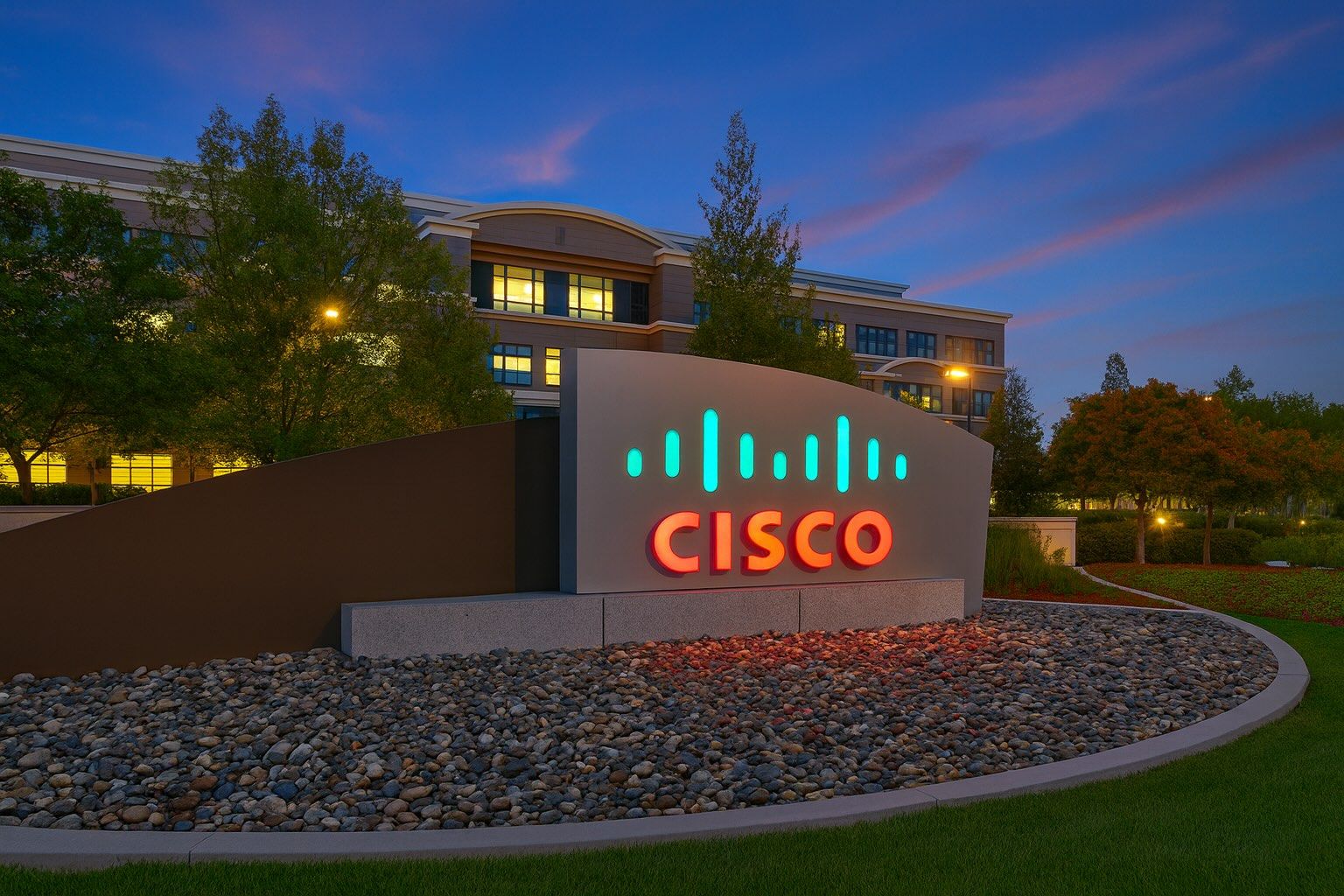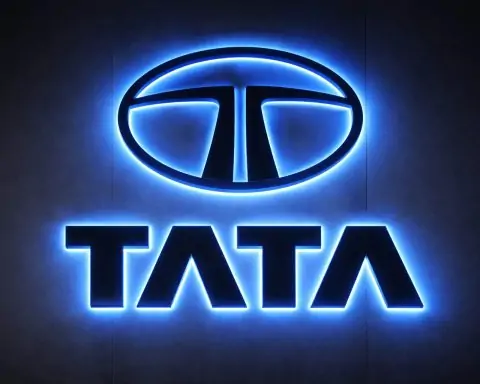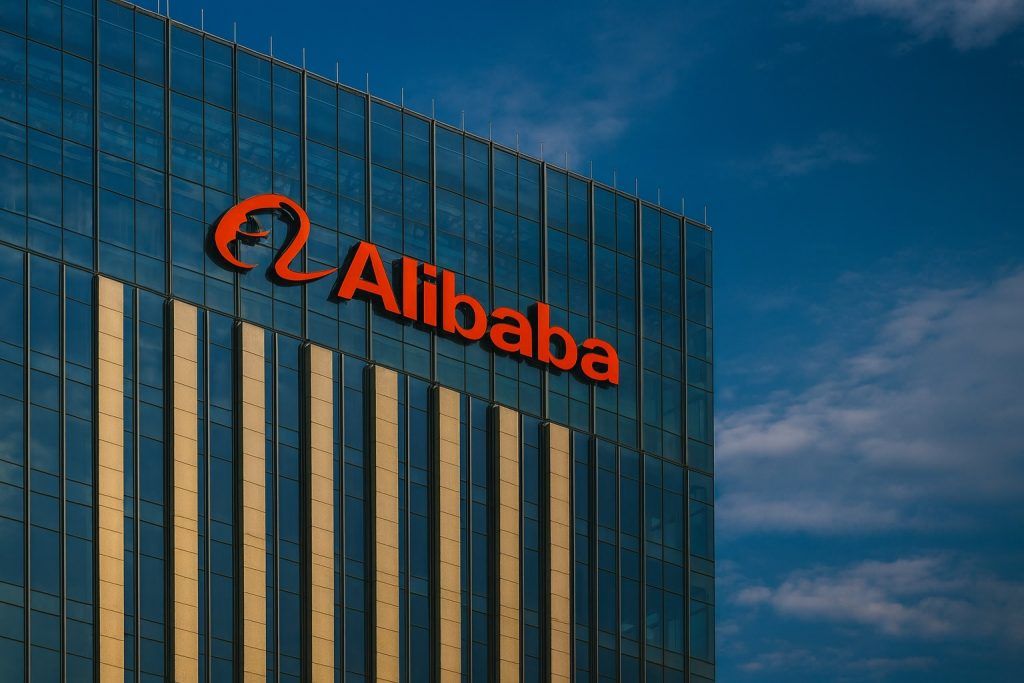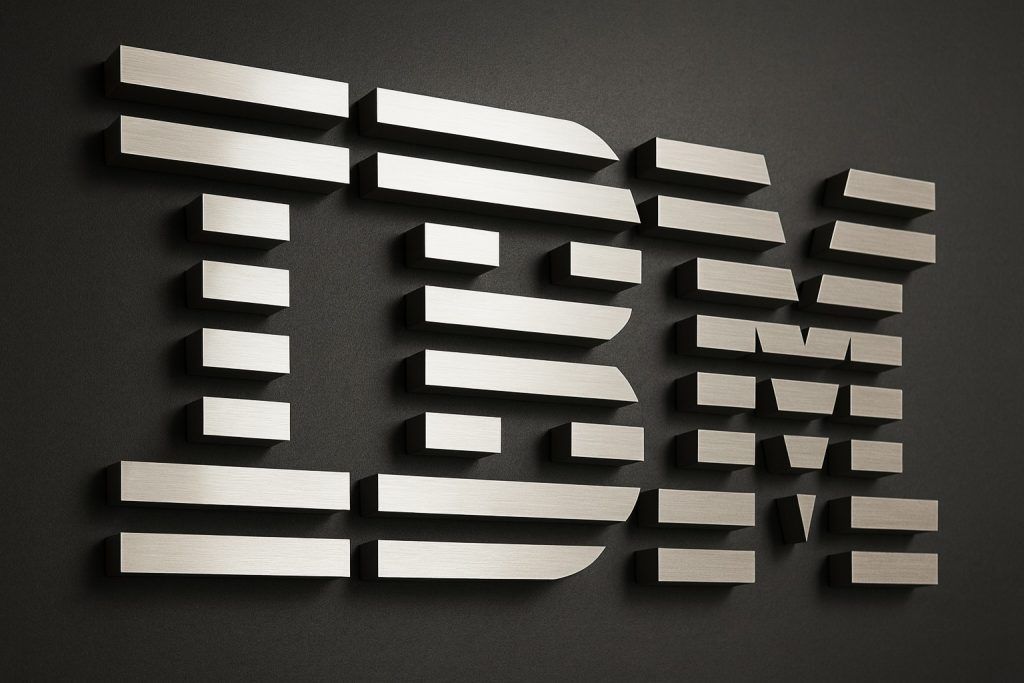- Stock Price Highs: Cisco Systems’ stock (NASDAQ: CSCO) is trading around $69 per share as of October 17, 2025 [1], hovering near its 52-week high of about $72.55 (versus a year-low of ~$52.11) [2]. Shares are up roughly 30% from a year ago, after a steady climb in recent days and months.
- Earnings Beat Expectations: In its latest earnings report, Cisco delivered an EPS of $0.99, slightly topping forecasts of $0.98, on revenue of $14.67 billion (up 7.6% year-over-year) [3]. This strong quarter capped ~5% annual revenue growth for fiscal 2025 and came with upbeat guidance for fiscal 2026.
- AI-Fueled Momentum: On October 8, 2025, Cisco unveiled a 51.2 Tbps “Silicon One P200” networking chip and 8223 router designed to connect AI data centers across vast distances [4] [5]. Cloud giants Microsoft and Alibaba are early customers, and Cisco’s AI-related orders topped $2 billion in FY2025 – more than double its initial target [6]. CEO Chuck Robbins said Cisco aims to be a “core systems provider” for large AI computing clusters [7].
- Dividend & Valuation: Cisco raised its quarterly dividend to $0.41 per share (annualized $1.64) this year, yielding about 2.4% [8]. The stock’s valuation (circa 17× forward earnings) is seen as reasonable compared to high-flying tech peers, offering investors a blend of growth and income [9].
- Analyst Outlook: Wall Street’s consensus on CSCO is “Moderate Buy,” with ~15 Buy ratings vs ~10 Holds and an average 12-month price target around $74–75 (about 7–8% above current levels) [10]. Some analysts are more bullish – citing Cisco’s AI and software transition – with price targets in the $80s [11]. Near term, technical charts show resistance around $72–73 (recent highs) and support near $64–65 (200-day average) [12], indicating a steadily upward trend barring any surprises.
CSCO Stock Near 2025 Highs After Steady Climb
Cisco’s stock is trading at $69 as of Friday, Oct. 17, 2025, putting it just a few dollars shy of its 1-year peak [13]. This marks a strong run for the networking giant – shares have risen about 30% over the past year, easily outperforming the broader market. In the week leading up to Oct. 17, CSCO gained roughly 2%, reflecting optimism around the company’s recent announcements and financial results. The stock’s 12-month high is $72.55 and the low is $52.11 [14], so current prices indicate investors have driven the stock toward the upper end of its range. Cisco’s market capitalization stands around $270+ billion, making it one of the larger tech companies, though still valued more conservatively than some high-growth peers.
Notably, Cisco’s share performance in 2025 has been steady rather than explosive. The company didn’t see the kind of wild swings that many smaller tech stocks experienced during the year’s “AI craze.” In fact, Cisco’s beta is under 1.0, meaning it tends to be less volatile than the market [15]. For many investors, this lower volatility and consistent uptrend are part of the appeal – Cisco is viewed as a stable blue-chip tech name. The stock’s 50-day and 200-day moving averages are around $68 and $65 respectively [16], and CSCO has been trading above these key support levels, indicating positive momentum. “Cisco’s stock has been a steady performer in 2025,” notes TechStock², with shares in the upper-$60s representing roughly a 31% increase from a year ago [17].
Strong Earnings, Healthy Financials & Dividend
Cisco’s latest earnings report showed the company is executing well on its financial goals. Quarterly earnings per share came in at $0.99, just above analyst estimates [18]. Revenue for the quarter was $14.67 billion, up about 7.6% year-over-year [19] – a solid growth rate for a mature tech firm. Cisco’s CEO touted it as a “strong close” to the fiscal year, driven by “accelerated innovation and solid execution” in key business segments [20]. In fact, product revenues grew roughly 10% in that quarter, led by robust networking hardware sales [21], while service-provider and cloud customer orders jumped nearly 49% – clear evidence of demand in those areas [22].
Crucially, Cisco not only beat expectations but also issued upbeat guidance for the year ahead. The company forecasts 5–6% revenue growth for FY 2026, reaching roughly $59–60 billion in sales, and adjusted earnings of about $4.00 per share [23]. These targets slightly exceeded Wall Street’s prior estimates, signaling management’s confidence that growth will continue into 2026. After this guidance was released (back in mid-August), Cisco’s stock climbed to new highs in after-hours trading [24], as investors digested the news that even this “old guard” tech company is benefiting from the current tech investment boom.
From a financial health perspective, Cisco looks strong. The company generates over $56 billion in annual revenue with about $10+ billion in net income [25], and it maintains healthy margins (recent net profit margin ~18% [26]). Cisco has a modest amount of debt (debt-to-equity ratio ~0.49) and ample liquidity (current ratio ~1.0) [27], indicating it can comfortably meet short-term obligations. After financing the massive $28 billion Splunk acquisition in 2024, Cisco’s balance sheet remains investment-grade and the company is de-leveraging as planned [28]. Analysts note Cisco’s net debt is quite manageable given its hefty ~$13B+ annual cash flow [29].
Cisco also continues to reward shareholders: it pays a quarterly dividend of $0.41 per share, which at the current stock price yields roughly 2.4% annually [30]. This dividend was recently raised (fiscal 2025’s increase), underlining Cisco’s confidence in its cash generation. At a time when many tech companies don’t pay dividends, Cisco’s payout makes it attractive to income-oriented investors. The dividend payout ratio stands around 62%, which is reasonable and leaves room for future dividend growth [31].
Importantly, Cisco’s stock valuation is not stretched despite the year’s gains. It trades around 26× trailing earnings (P/E ~26) and approximately 17× forward earnings [32], which is cheaper than many peers in the tech sector. For example, high-growth cloud or AI companies often sport much higher multiples. As one Motley Fool analysis noted, Cisco’s moderate earnings multiple, combined with a “decent dividend yield,” makes it a comparatively “value-priced” tech stock in a pricey market [33]. In other words, investors are paying a market-average price for Cisco’s steady mid-single-digit growth – a trade-off many find appealing.
Big Bet on AI: New Products and $2B Order Surge
A major narrative driving Cisco’s recent optimism is its positioning in the AI (artificial intelligence) infrastructure boom. While Cisco isn’t an AI software company, it provides much of the networking “plumbing” essential for AI – and it’s making sure it remains indispensable in that arena. This month, Cisco grabbed headlines by launching a game-changing router and chip for AI data centers. On October 8, 2025, Cisco unveiled the Cisco 8223 router alongside its new Silicon One P200 chip, billed as the industry’s most scalable and efficient networking solution for AI workloads [34]. The 8223 is a 51.2-terabit-per-second Ethernet router in a compact 3RU form factor, designed to connect multiple data centers up to 1,000 km apart so they can function as one giant AI supercomputer [35] [36]. This directly addresses a key bottleneck in the AI era: cloud providers and hyperscalers are running out of room to “scale up” within a single data center, so they need ways to “scale across” many data centers for massive AI training jobs [37].
Cisco’s solution impressed industry watchers. Powered by the new P200 silicon, the router can move huge volumes of data between facilities while keeping everything in sync. Notably, the P200 chip replaces 92 separate chips with one, and the resulting router uses 65% less power than comparable systems – a critical advantage given the power constraints of sprawling AI farms [38]. “The increasing scale of the cloud and AI requires faster networks with more buffering… We’re pleased to see the P200 providing more options in this space,” said Microsoft’s Azure Networking VP, praising Cisco’s innovation [39]. In fact, Microsoft and Alibaba were revealed as initial customers for these new AI networking products [40], validating real-world demand. By moving into high-end networking chips, Cisco is also encroaching on territory dominated by Broadcom, emphasizing that it aims to supply the critical hardware linking tomorrow’s AI superclusters [41].
This strategic push into AI hardware is part of why Cisco’s prospects have brightened. Throughout 2025, as generative AI and cloud computing investments surged, Cisco saw burgeoning orders from data center clients. In its fiscal Q4 (May–July 2025), the company booked over $800 million in AI-focused orders, bringing the full-year FY25 total above $2 billion – “blowing past” the initial target of ~$1 billion [42]. These orders came from a handful of cloud titans upgrading their networks with Cisco’s ultra-fast switches and routers (often featuring Cisco’s custom Silicon One chips and optics). CEO Chuck Robbins noted that Cisco is positioning itself as a “core systems provider” for major AI training clusters, not just a legacy networking supplier [43]. In other words, whenever a hyperscaler builds out the next GPU-packed AI data center, Cisco wants its gear to be the connective tissue tying all those servers together.
Investors have taken notice that even an established firm like Cisco is finding new growth from the AI wave. When Cisco reported those robust Q4 numbers and raised guidance, it was a clear signal that “this old guard is benefiting from the AI gold rush,” as one analyst put it [44]. Cisco’s stock got a boost in August on that news, and the continued updates (like the October product launch) have helped sustain the positive sentiment. To be clear, Cisco’s share price didn’t skyrocket overnight on the router announcement – but it reinforced a growing belief that Cisco will be a key enabler in the AI era and can capture additional revenue as companies build out next-gen infrastructure [45]. The long-term upside from these moves could be significant if AI-related demand keeps growing. However, Cisco’s management and some analysts do caution that hardware sales growth may moderate in later quarters – especially as the company transitions more to software and subscriptions – so the AI hardware boom might normalize over time [46]. For now, though, AI is clearly a tailwind bolstering Cisco’s growth story.
Aside from AI, Cisco has also been active in cybersecurity and software. Its massive acquisition of Splunk (a data analytics and security software firm) for $28 billion in 2024 was aimed at bolstering Cisco’s offerings in cloud software and observability. As of late 2025, Splunk’s integration is going well and helping Cisco offer more comprehensive security + monitoring bundles (though the deal’s high cost did dent margins in the short run) [47] [48]. Cisco has signaled it remains open to smaller “tuck-in” acquisitions, especially in cloud software and security, to further strengthen its portfolio [49]. These strategic moves underscore that Cisco is not just a hardware company; it’s evolving into a more software-centric, subscription-oriented business. The upside is more recurring revenue, but the transition comes with challenges – from cultural shifts to near-term margin pressure as software investments ramp up [50]. Still, the broader strategy is to ensure Cisco stays relevant in high-growth areas (AI, security, hybrid cloud) rather than being seen as merely a 1990s-era routing vendor.
What Do Analysts and Experts Say?
Cisco’s recent performance has largely won over Wall Street, though opinions do vary on how much upside is left. Overall, the expert consensus is cautiously optimistic, trending toward a “moderate buy.” Out of roughly 25 analysts covering CSCO, almost all rate it a Hold or Buy – with about 1/3 giving outright Buy or Strong Buy recommendations, and virtually no Sell ratings [51]. The average 12-month price target is around $74–75 per share [52], implying modest single-digit upside from current levels. That target aligns with Cisco’s expected earnings growth – in other words, analysts see the stock grinding higher in line with its profits, rather than rocketing upward dramatically.
Bullish analysts emphasize that Cisco is successfully reinventing parts of its business for the future. They point to those blowout AI order figures and hyperscaler wins as proof that Cisco can capture new spending trends [53] [54]. “Cisco delivered a strong close to FY 2025… indicating resilience despite challenges in security and observability,” noted one analysis of the latest results [55]. Four of Cisco’s top six web-scale customers doubled their spending with Cisco recently, which shows “strong demand in a space where Cisco has carved out a key role,” according to Futurum Research [56]. Optimists also laud Cisco’s execution and shareholder-friendly moves. “We hit the top end of our guidance and see massive opportunity ahead,” CEO Robbins said regarding the company’s outlook, underscoring management’s confidence [57] [58]. This tone, combined with the above-consensus forecasts, led to a flurry of price target upgrades. For instance, J.P. Morgan and Morgan Stanley reiterated overweight/buy ratings in late summer and bumped up their targets (JPM to $78, MS to $70) [59]. Bank of America went even further, raising its target from $76 to $85 while maintaining a Buy rating [60]. Similarly, Evercore ISI and Barclays have lifted their targets into the low/mid-$70s [61]. Bulls argue that even after this year’s rally, Cisco is still reasonably valued – it trades at roughly 17× next-year earnings, offers a ~2.4% yield, and has growth drivers like AI and security that could sustain mid-single-digit revenue increases [62]. Indeed, current analyst forecasts project Cisco’s revenue and EPS to rise ~5% and ~9% annually through 2027, which is “solid for a stock trading at 17× and yielding ~2.5%,” as one Nasdaq commentary noted [63] [64]. If Cisco can consistently post even high-single-digit growth, some see room for its valuation multiple to expand (especially if interest rates decline, which would make its reliable dividend more attractive) [65].
On the other hand, more cautious analysts (the “bears”) contend that Cisco remains a slow-growth story at heart. They note that while emerging areas like AI are promising, Cisco’s core business is still large networking hardware, an area that may only grow so fast. In fact, Cisco’s long-term revenue growth has been quite anemic historically – averaging only ~1.7% per year since 2015 [66]. One skeptic quipped, “When I think of Cisco, one word comes to mind: Average,” suggesting that the company, while solid, hasn’t been an exciting growth engine [67]. Bears worry that hardware sales could decline faster than Cisco’s nascent software sales can replace them [68]. For example, if enterprises delay upgrading their networking gear or shift more toward cloud-managed solutions from competitors, Cisco’s revenue might stall. And competition is fierce: Arista Networks, a rival in data center switching, has captured many cloud customers and dramatically outpaced Cisco in stock performance (540% vs 50% gain over five years) [69]. Juniper Networks is another challenger, now bolstered by a strategic partnership with HPE, aiming to chip away at Cisco’s campus and routing business [70]. Even Huawei, despite Western sanctions, competes aggressively overseas and at times edges out Cisco in telecom gear market share [71]. These competitors, plus others like VMware or cloud providers’ in-house solutions, mean Cisco cannot take its dominance for granted.
The cautious camp also points to some recent soft spots in Cisco’s results. Not all customer segments are booming – for instance, public sector orders fell 6% YoY recently [72], which could be a warning sign of tighter government IT budgets. Additionally, Cisco’s pivot to subscriptions and software, while positive long-term, brings short-term challenges: higher R&D expenses, integration costs (e.g. from the Splunk deal), and potentially lower margins until the new revenue builds up [73]. Cisco’s gross margins, around 64%, leave limited room for error if component costs rise or pricing gets competitive [74]. Any resurgence of supply-chain issues or a global economic slowdown could prompt customers to delay network upgrades, as happened in past downturns [75]. In summary, skeptics see Cisco as a stable but mature incumbent, unlikely to suddenly morph into a high-growth superstar. They expect the stock to remain range-bound if the company’s growth stays in the mid-single digits.
Forecasts: Near-Term Trends and Long-Term Outlook
Looking ahead, most analysts anticipate moderate upside for Cisco’s stock, with a generally favorable risk/reward profile. The consensus is that Cisco will continue to “trend upward steadily” as long as it hits its quarterly targets and as enterprise spending on networking/AI remains healthy [76]. In the short term, CSCO’s trading pattern appears technically strong but not overheated. Chart analysts highlight a potential resistance around the $72–73 level, which is roughly the recent peak reached after the August earnings news [77]. If positive news or earnings momentum pushes the stock above that zone, it could “break out” toward the mid-$70s. Conversely, the stock has solid support around $64–65 – near its 200-day moving average and a level where value-focused investors tend to step in due to the attractive yield [78]. Barring any big negative surprises, these support levels suggest limited downside in the near term. Moreover, Cisco’s beta below 1 means it’s less prone to wild swings; in down markets it often falls less than high-octane tech names, making it something of a defensive play in the tech sector [79].
In the long term (2–5 years), Cisco’s trajectory will depend on its success in transforming for the new era of IT. The company is aiming for over 50% of revenue from software and subscriptions in coming years (up from ~30% several years ago). If it achieves this pivot, some experts believe Cisco’s stock could earn a higher valuation multiple, closer to that of software companies [80]. This “re-rating” scenario would likely require Cisco to accelerate its top-line growth above the low single digits – something it struggled with pre-2022 [81]. However, the ingredients for faster growth might be falling into place: the surge in AI-related demand, a refreshed product lineup (new switches, Wi-Fi 7 gear, 800G optics, etc.), and the integration of high-margin software like Splunk’s analytics are all potential catalysts. Analysts forecast ~5% revenue and ~9% EPS growth annually through 2027 [82]; if Cisco can consistently beat those numbers or show momentum in security and AI sales, the stock could outperform current expectations. On the flip side, if economic conditions worsen or tech spending cycles down, Cisco’s sturdy-but-unspectacular growth could keep the stock trading in a narrow range. The broader tech industry context will play a role: for instance, a continued boom in cloud infrastructure and AI investment favors Cisco, whereas an unexpected cutback in corporate IT budgets would pose a headwind.
For now, Cisco Systems sits in a favorable spot: it’s a legacy tech leader that has proven it can adapt and capitalize on new trends, from cloud to AI. Its stock offers a rare combination of income (2.4% dividend), stability, and exposure to tech’s hottest themes. As TechStock² notes, Cisco today is “a transformed enterprise that still leads its field,” not just the “stodgy 1990s router company” of yesteryear [83]. The coming quarters will test how well Cisco can execute on its ambitious roadmap – but many experts agree that the company’s financial foundation and market position are strong. With a cautiously optimistic Wall Street behind it and new growth drivers in play, Cisco’s next chapters could see this networking icon steadily climbing higher, even if it’s not the flashiest name in tech. Investors looking for a balanced tech opportunity may find Cisco’s slow-and-steady approach quite compelling as we head into 2026.
Sources: Cisco investor filings and press releases; MarketBeat instant analyst reports [84] [85]; Reuters news on Cisco’s AI chip launch [86] [87]; TechStock² analysis (ts2.tech) on Cisco’s financial outlook and industry positioning [88] [89]; Nasdaq/MarketBeat analyst surveys [90].
References
1. appreciatewealth.com, 2. www.marketbeat.com, 3. www.marketbeat.com, 4. ts2.tech, 5. ts2.tech, 6. ts2.tech, 7. ts2.tech, 8. www.marketbeat.com, 9. ts2.tech, 10. ts2.tech, 11. ts2.tech, 12. ts2.tech, 13. www.marketbeat.com, 14. www.marketbeat.com, 15. www.marketbeat.com, 16. www.marketbeat.com, 17. ts2.tech, 18. www.marketbeat.com, 19. www.marketbeat.com, 20. ts2.tech, 21. ts2.tech, 22. ts2.tech, 23. ts2.tech, 24. ts2.tech, 25. ts2.tech, 26. www.marketbeat.com, 27. www.marketbeat.com, 28. ts2.tech, 29. ts2.tech, 30. www.marketbeat.com, 31. www.marketbeat.com, 32. ts2.tech, 33. ts2.tech, 34. ts2.tech, 35. ts2.tech, 36. ts2.tech, 37. ts2.tech, 38. ts2.tech, 39. ts2.tech, 40. ts2.tech, 41. ts2.tech, 42. ts2.tech, 43. ts2.tech, 44. ts2.tech, 45. ts2.tech, 46. ts2.tech, 47. ts2.tech, 48. ts2.tech, 49. ts2.tech, 50. ts2.tech, 51. ts2.tech, 52. ts2.tech, 53. ts2.tech, 54. ts2.tech, 55. ts2.tech, 56. ts2.tech, 57. ts2.tech, 58. ts2.tech, 59. ts2.tech, 60. ts2.tech, 61. www.marketbeat.com, 62. ts2.tech, 63. ts2.tech, 64. ts2.tech, 65. ts2.tech, 66. ts2.tech, 67. ts2.tech, 68. ts2.tech, 69. ts2.tech, 70. ts2.tech, 71. ts2.tech, 72. ts2.tech, 73. ts2.tech, 74. ts2.tech, 75. ts2.tech, 76. ts2.tech, 77. ts2.tech, 78. ts2.tech, 79. www.marketbeat.com, 80. ts2.tech, 81. ts2.tech, 82. ts2.tech, 83. ts2.tech, 84. www.marketbeat.com, 85. www.marketbeat.com, 86. ts2.tech, 87. ts2.tech, 88. ts2.tech, 89. ts2.tech, 90. ts2.tech







